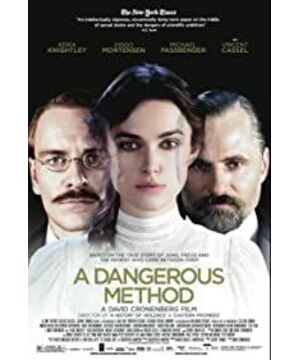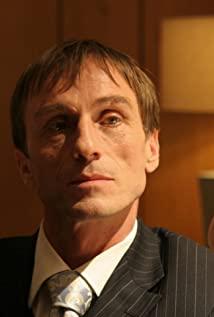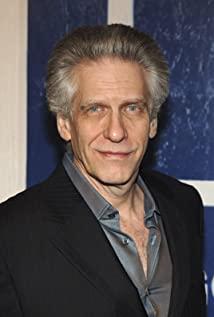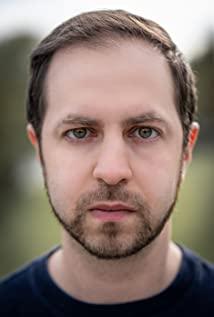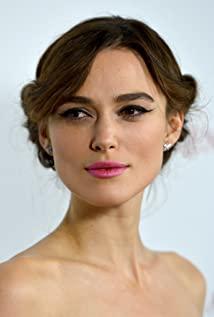She was born into a wealthy and educated Jewish family in Rostov-on-Don, Russia. She is an excellent musician and is proficient in many languages. Growing up Sabina, the experience of her father spanking her ass aroused her lust. In 1904, when Sabina was nineteen years old, she developed symptoms of hysteria as shown at the beginning of the film. By the spring of 1905, Sabina was well enough to start attending medical school in Zurich, while assisting Jung's research. She was the first patient Jung analyzed. Jung and Sabina developed a strong erotic connection, but there is no clear historical record of how much of their relationship was a real sexual relationship and how much was spiritual. Jung's correspondence with Freud began in 1906 and was published in 1974, with forty references to Spieler. The reason why the two people's letter mentions Spiel at a great length is because of the transference and counter-transference issues that occurred in the relationship between Jung and Spiel. Freud was still very supportive of Jung, his younger colleague, but his attitude changed when Spieler moved to Vienna in 1911 and became part of the Vienna psychoanalytic circle . Spieletti's paper concludes as follows: "The instinct of self-preservation of species requires the destruction of the past in equal measure so that the new can be created... These two instincts are basically It is a contradiction... The instinct of self-preservation allows man to survive, but the opposite instinct of self-reproduction (instinct of self-reproduction) regenerates him with a new face after changing him. At the beginning, Freud He did not accept the destructive instinct, but in his later publication Beyond the Pleasure Principle, he included Sabina's argument in a commentary, and Sabina has since become a true follower of Freud. In Bina's correspondence with Freud, she continued to express her love for Jung. This also angered Freud, who always replied to Sabina with derogatory references to "her Germanic Hero". At the same time, feeling that Freud and Jung have a lot in common, Sabina often encourages Jung to reconcile with Freud. Between 1909 and 1923, Sabina kept in touch with both Jung and Freud.
In 1912 Sabina married Pavel Schefter, a physician from Greater Rostov, with whom they had a daughter. Giving Jung a "Siegfried": Bina's early wish, and having a daughter with Shefford must have been a sigh of relief for her. After the two divorced, Shefford returned to Rostov to remarry and have a second daughter. At that time, Spieler tried to work in Berlin, but was unable to analyze the case. Sabina turned to Freud for help, and Freud couldn't help her, and she continued to write papers on the analysis of children, particularly on topics related to the meaning of early language. She has written at least thirty papers and is truly a pioneer in the analysis of children.
As Sabina was unable to carry out her child analysis work in Berlin, she moved to Lausanne in Zurich after the First World War and became a member of the Geneva Psychological Society. During this period, Jean Piaget was analysed by Spieler for eight months, and they also discussed each other's views on child development. Piaget's career was just beginning, and after eight months of daily psychoanalysis, the differences in their views on child development became increasingly apparent. Spieler always wanted to go back to Rostov, she mentioned this wish in a letter to Freud in 1922, and Freud also suggested that she return to Rostov to lead the Russian psychoanalytic society (Russipsychoanalytic society). development work. She lived up to Freud's expectations, and Spieler was a member of the Soviet-Russian Psychoanalytic Association until 1936. Even after the Soviet Union's Psychoanalytic Association was banned by Stalin, she insisted on furnishing her analytical recliner in her Rostov apartment, and we have no way of knowing how many people used it at the time. She later reconnected with her ex-husband Shefford, and the two had a second daughter. Shefford died of a heart attack in 1937, and Sabina and Shefford's second wife agreed to raise their three daughters together, in case any of them were to fail, and at least one other could take care of the three children.
When the Nazis reached Rostov in 1941, Shefford's second wife took her daughter Nina to the back of the Ural Mountains, while Sabina chose to stay in Rostov. The best years of Sabina's life have been in German-speaking countries, so she trusts the Germans far more than the Soviets, but that brings misfortune. She and her two daughters were arrested along with other Jews and taken to the Central Synagogue to be executed. Years later, there was a monument in the church dedicated to the Jews who were executed there, but the inscription was changed a few years ago, and the words "To Jews" were removed and replaced by "To Russian Citizens", which did not mention Jews at all.
Sabina Spieler is described in the movie as the love of Jung's life, which is not the case. Spieler was an important part of Jung's early professional development, but after World War I, no one in Zurich circles recognized her. When I first mentioned Sabina to Joe Henderson, Henderson had no memory of her.
Sabina Spieler's life is a tragic and tragic story that touches on many of the major disasters of the twentieth century. At the end of Sabina's life, she was like a broken red silk, an old woman with a hunched back, but she was only fifty-eight years old at the time. We will never know how many death instincts she experienced once she lived to the extent of Thanatos, the god of death.
Thomas Kersh2012.03.11
View more about A Dangerous Method reviews


